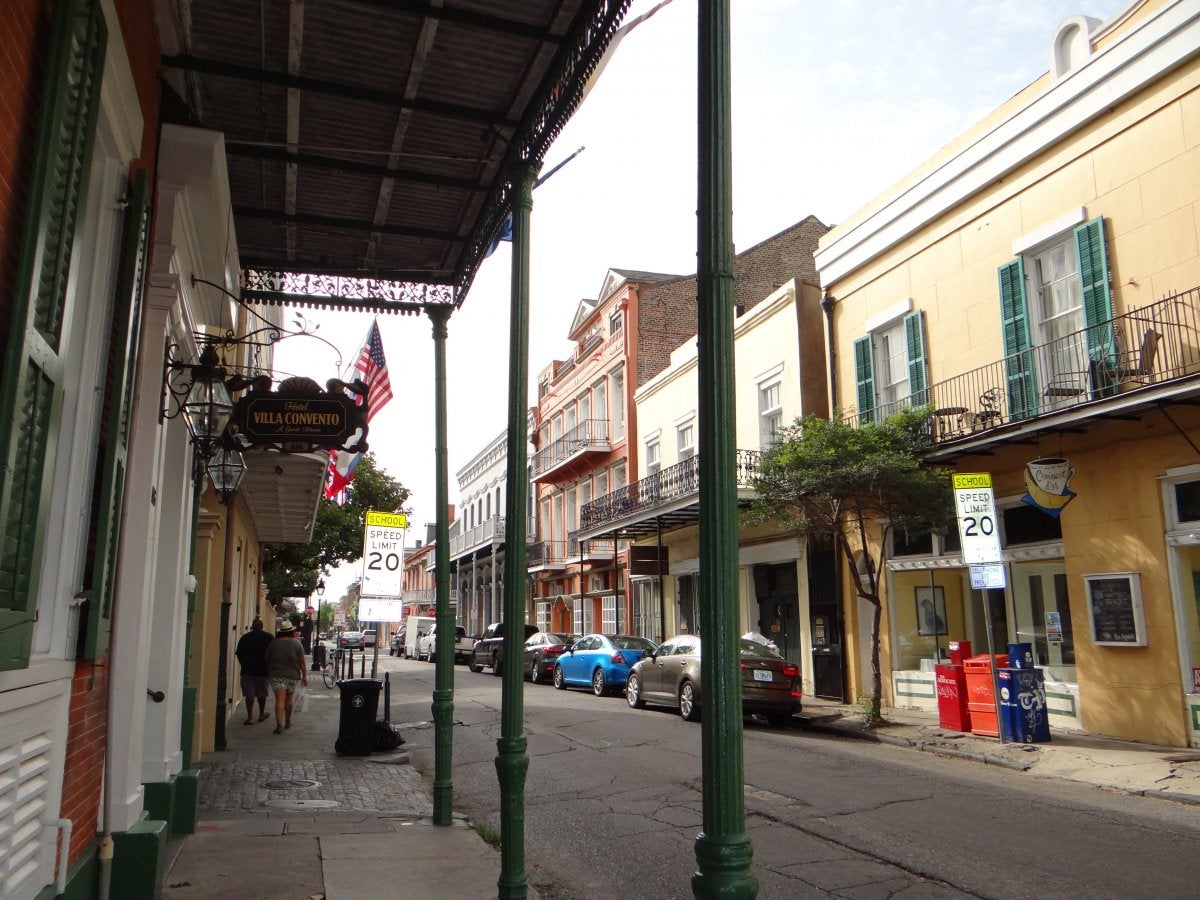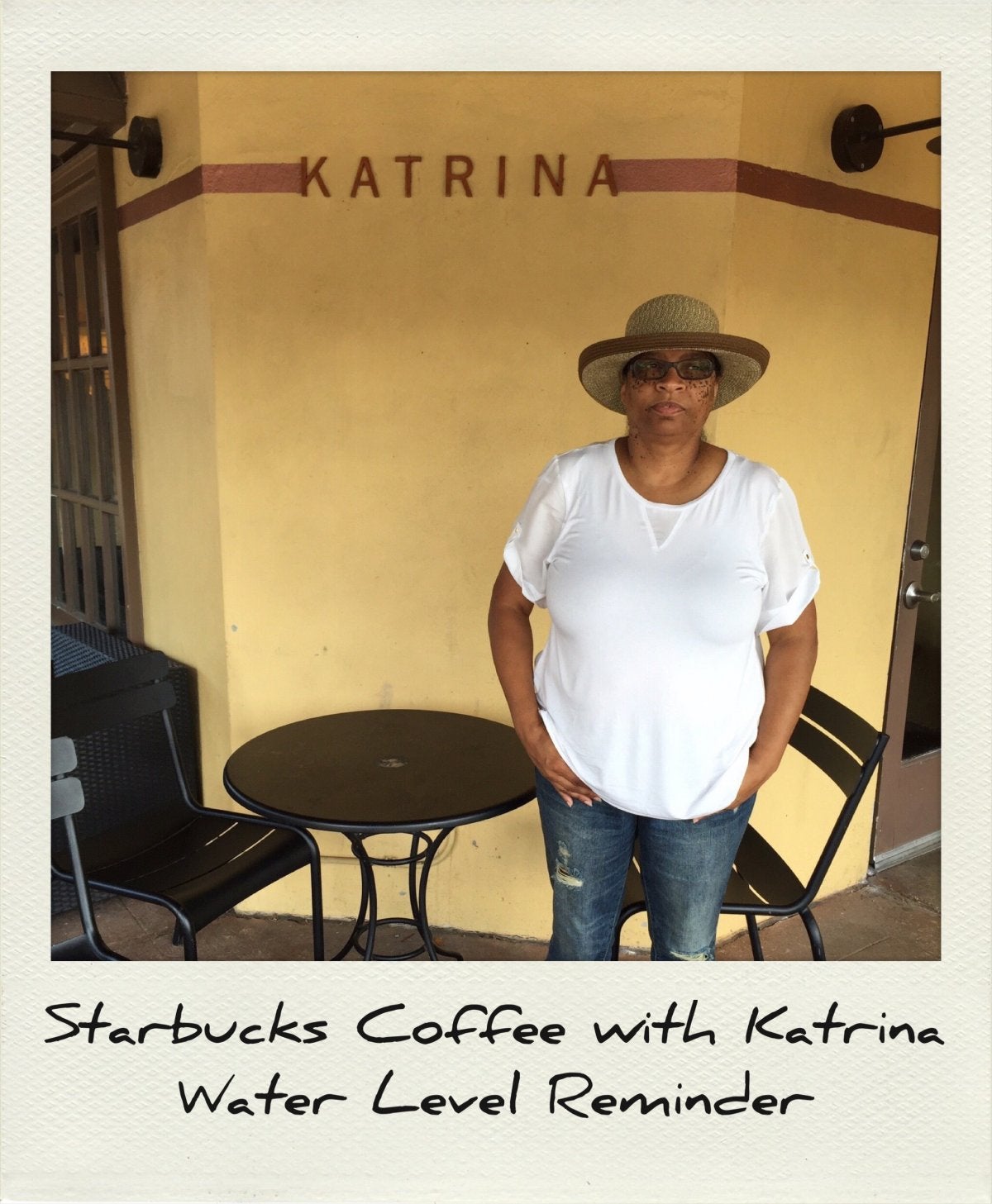NEW ORLEANS, LA
July 5-10, 2015
I’d like to begin by thanking the department chair, William Deverell, for the opportunity to travel to New Orleans and explore the rich culture of this city, including the historic French Quarter and Bourbon Street, as well as touring the Whitney Plantation (Wallace, LA), the nation’s first museum dedicated to telling the story of slavery.
 |
 |
| Bourbon Street | Bourbon Street |
New Orleans, Louisiana is known for its vibrant history, its jazz clubs, its distinct Creole cuisine, and its spectacular Mardi Gras festival. All of this can be found in the intimate and unique French Quarter neighborhood. One dominant feature throughout this community, where buildings crowd each other, is the spectacular architecture. The balconies overhang the sidewalks, providing shelter from the hot summer sun, or sudden downpours, and are decorated with intricate ironwork. The most popular landmark in the French Quarter is Bourbon Street, which is the site of the annual Mardi Gras celebrations. Also set in the heart of the French Quarter is Jackson Square, which was originally known as the Place d’Armes, and then renamed to honor Andrew Jackson who led troops to victory in the Battle of New Orleans. Jackson Square is bordered by historic structures such as the St. Louis Cathedral (the oldest operating cathedral in the nation), the Presbytère and Cabildo (part of the Louisiana State Museums) and the Pontalba Apartments (the oldest apartment buildings in the U.S.). Just across the street is the famed Café du Monde, serving up beignets and café au lait 24 hours a day, seven days a week.
 |
 |
|
Jackson Square with St. Louis Cathedral in the background |
Beignets at Café Du Monde |
|
French Quarter Architecture |
|
As part of my historical journey to New Orleans, I went to the Whitney Plantation Museum located about 50 miles north of New Orleans in Wallace, Louisiana. In 1752, Ambroise Heidel bought the original land that the plantation sits on and engaged in the business of indigo. In 1803, Ambroise’s youngest son, Jean Jacques Haydel took over the property and transitioned the plantation from indigo to sugar and then in 1820 passed the property on to his sons. After the Civil War, the plantation was sold to Bradish Johnson, who named the property after his grandson, Harry Whitney. In 1999, John Cummings bought the property (which had been added to the National Register of Historic Places in 1992) from Formosa Chemicals and Fiber Corporation who had bought the property with the intention to build the world’s largest rayon plant on the site.
On December 7, 2014, the Whitney Plantation opened its doors to the public for the first time in its 262 year history, becoming America’s first and only museum focused solely on slavery. My 90 minute tour of this museum invoked a series of emotions ranging from anger, sadness and frustration to hopeful, courageous and inspired. The tour allows you to visit the slave quarters, the detached kitchen, the carriage house, the blacksmith shop, the “hot box” (where insubordinate workers, or those awaiting sale, were confined) and the “Big House,” which we entered through the back door, just as the enslaved would. On the property, they have also built several memorials including Allèes Gwendolyn Midlo Hall memorial dedicated to 107,000 people who were enslaved in Louisiana and documented in the Louisiana Slave Database and the Wall of Honor which is a memorial dedicated to all of the people who were enslaved on the Whitney Plantation. The most heartbreaking part of the tour for me was The Field of Angels memorial dedicated to 2,200 Louisiana slave children who died before they were three years old. Their names are engraved on granite slabs that also contain quotes describing their everyday life. At the end of the tour, I was fortunate enough to meet Mr. John Cummings, owner of the Whitney Plantation Museum, who is a real estate investor and former trial lawyer. We had a very enjoyable conversation where I was able to learn first-hand about his vision for the museum.
 |
| Slave quarters on the Whitney Plantation |
 |
| With owner of the Whitney Plantation, Mr. John Cummings |
Although it has been nearly ten years since Hurricane Katrina hit the New Orleans region, I would be remiss to visit the city and not go to see the areas affected by this catastrophic event. I was able to take a tour of the Lakeview, Gentilly and St. Bernard neighborhoods, as well as the Lower Ninth Ward, the neighborhood most devastated by Hurricane Katrina. During this tour, I was able to witness the rebuilding in these districts, as well as observe those areas where parts of the devastation still remain. Hurricane Katrina made landfall in Louisiana on August 29, 2005, and it is estimated that more than half of New Orleans’ neighborhoods have recovered an impressive 90 percent of their pre-Katrina population. As you can imagine, not everyone was able to return to their communities, but they have found that many residents came to volunteer immediately after the destruction and ended up making New Orleans their home. In addition, after visiting the area two years after Hurricane Katrina, actor and producer Brad Pitt founded Make It Right and pledged to build 150 safe and sustainable homes in the Lower Ninth Ward and has thus far built more than 100 of these homes. Similarly, Barnes and Noble founder, Leonard Riggio founded Project Home Again to assist in the redevelopment of New Orleans. This nonprofit organization has been building and furnishing homes in Gentilly for working-class residents who lost their homes in Hurricane Katrina. Participants in Project Home Again would give their original lot—with or without an unrepaired house—to Project Home Again, and in return, Project Home Again would give them a new house and let them pick out furniture to go with it. All of the new homes were assigned a value of $150,000, and what seems like the best part of the deal, $30,000 of the mortgage was forgiven each year so participants owned it free and clear after five years.
 |
 |
 |
|
As the offspring of generations of Louisiana natives, I am particularly delighted to have been able to visit New Orleans and to observe the resilience of its people. Despite the daunting challenges, New Orleans has been able to persevere.
